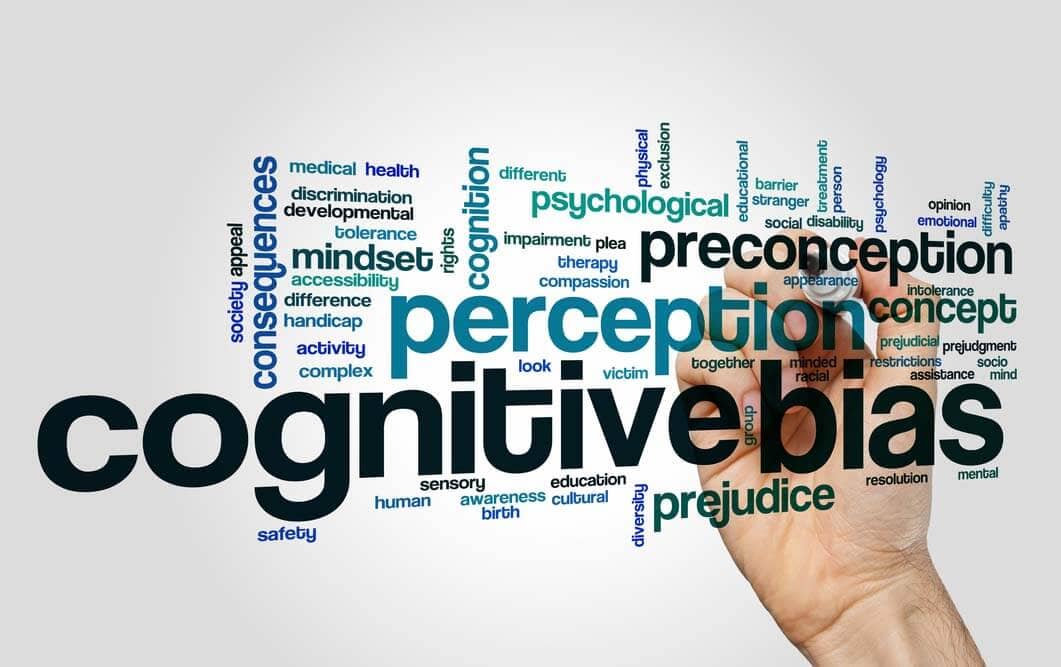By Vara Prasad. Instructor, Sahaja Online
We live in a world where biases of any kind are one of the most widely discussed topics. Racial bias and political bias, for instance, dominate the news cycles heavily these days in America.
There are other kinds too. If you’re seeking information very often that will most likely strengthen your beliefs or are supportive of them, then you’re probably suffering from what’s known as confirmation bias.
But meditation, and especially Sahaja meditation, which can elevate our consciousness to a higher state, can help cut through the shackles of negative cognitive biases.
Knowing that men aged 30 spent an average of 8 years in school, how many years do you think women aged 30 spent in school? 7, 5 or 3 years?
More on that later.
A quite often quoted phrase in modern education is the philosophy of, ‘I think therefore I am’. This is fantastic when you think of overcoming superstitions in our society to get rid of some of its evils. If we go deeper, there is a problem here. This philosophy does not take into account the circumstances that a person was born into. So, it would be a big risk for a person born into a higher socioeconomic status (SES) without any exposure to the lower SES issues to make decisions that affect all of society.
The fast-paced technology changes are another example. My father is a retiree and not particularly impressed with online-banking, he is someone who prefers having a human connection to resolve his issues. Recently, he found a bank that catered to his needs and sense of comfort and closed all his accounts with the technology-first (TF) banks. And now these banks aren’t too happy with the loss of business of all his savings. The point here is that the demographics of elderly-retirees was not taken into consideration by the team of 20-somethings that designed the technology based on what they felt most passionate or important in life. The examples are endless. We all live with biases of some kind within us.
I was involved in a project in a factory and one day, some spanking new benches appeared in the corridors next to the machines. Someone in the management did not like that the factory workers were resting on the lawn and out of goodwill, they wanted some clean benches for the workers to rest. There was a townhall-style meeting explaining how much the management cared about the workforce, etc.
But after a month, the use of the new benches dropped almost to zero. What the management, which comprised of people who thought material comfort was everything in life, missed was that the workers were assembling at the lawn for camaraderie to reinvigorate and take a break from what was a fairly monotonous job. They could care less where they sat or not at all. Get the point?
To avoid biases, what we require is an internal system within ourselves that can constantly take new information, process it, absorb the positives and reject the negatives. This can help in forming a balanced opinion leading to a better worldview.
Wouldn’t it be handy to know that such a system already exists within ourselves and all you have to do is to turn the switch on without much effort? Sahaja meditation can help you with that.
How Meditation Helps Avoid Cognitive Biases
In two ways, to be precise. First Sahaja meditation functions by helping us discover a new awareness within ourselves, a higher state of consciousness where thoughts, analysis, and cognitive biases cannot exist. When in meditation, we touch this higher state and it helps us rise above the limitations of our cognitive conditioning and biases, helping us see the truth and issues with clarity.
Second, the new awareness opens up our subtle energy system of energy centers and channels and this helps us perceive the truth and reality in absolute terms without the filter of our biases. This is a higher state of awareness and perception, driven by the state of the energy centers and channels in our body or the chakra system.
Practically, meditators often take a pause and check the subtler vibrations in a particular situation or when faced with a problem or question. These subtler vibrations are a form of perception through the awareness of the higher state.
For example, a meditator may find a prolific speaker or politician who draws large crowds, but the subtler sense of perception may emit negative vibrations from the person and his or her ideas, that normal cognitive perception cannot make out as having bad consequences or going against nature.
We’ve dealt with this topic in depth on our website.
Coming back to the question about women in school posed at the beginning of this topic, Hans Rosling has done extensive research and has data to back the answer that, in fact, women have almost caught-up with men, 7 years. Don’t worry if you got it wrong, the majority of us do. Another case where our biases, both news and personal, cloud the truth and make us ignorant. If you add up a few examples, you will realize how we form a skewed view of the world, consequently, take improper decisions in our life. The good thing is, with just a bit of discipline and using Sahaja meditation, we can guard ourselves against biases.
But it takes time and some hard work to get to that more mature state to see through our own biases.
Join our online meditation sessions with expert instructors who can help you on this journey and make it a lot easier.


Responses